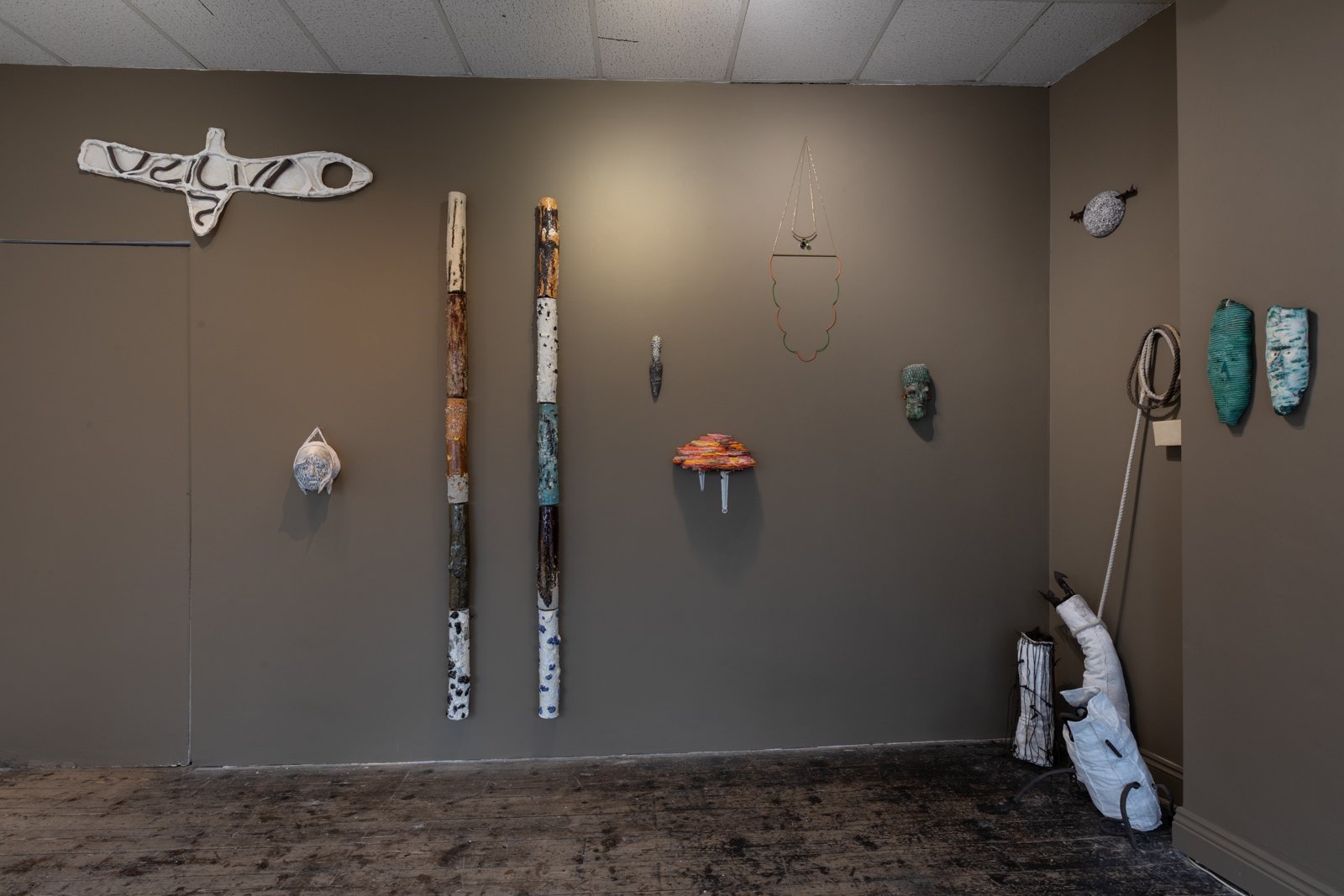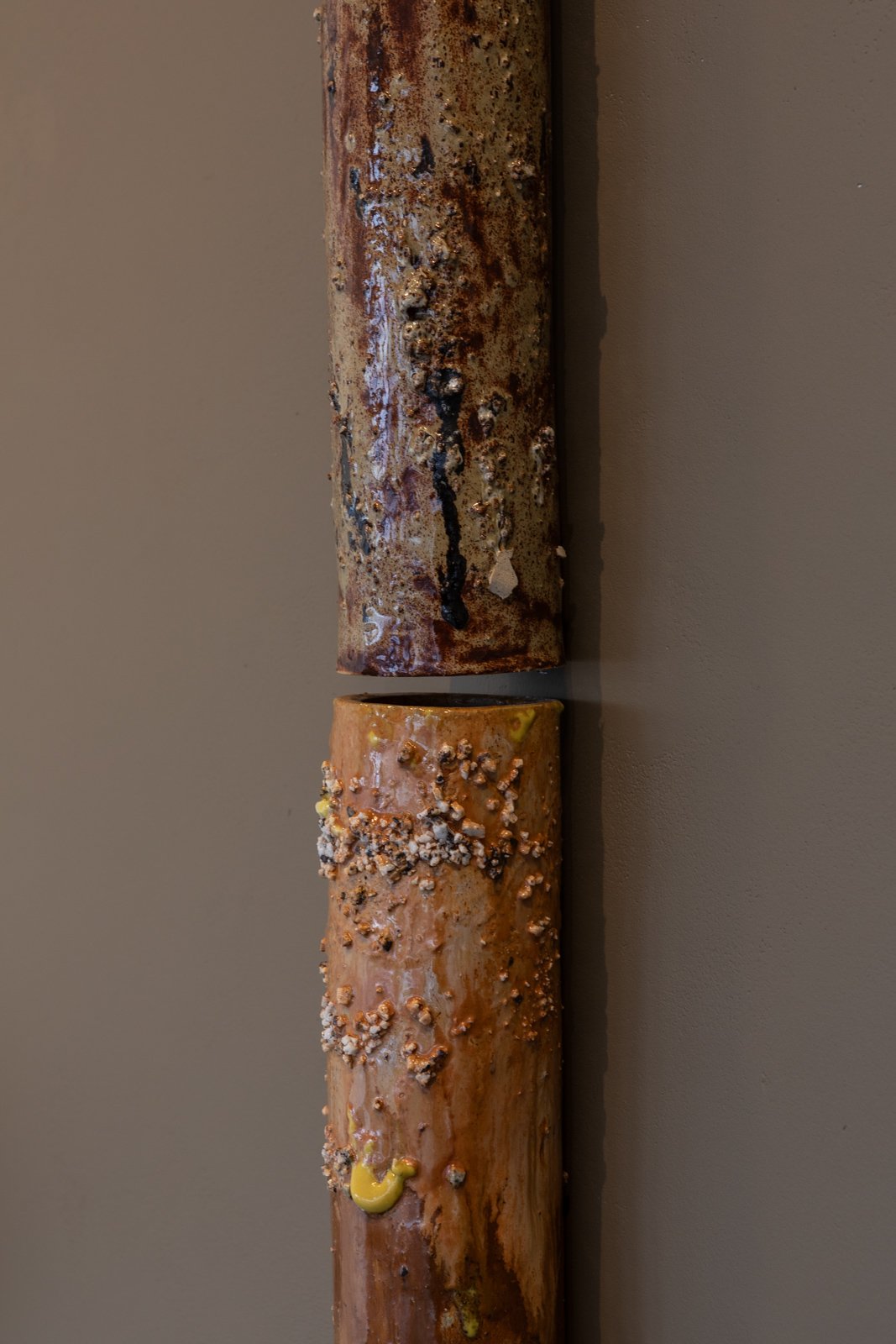




Oesia 1&2
In Riddley Walker by Russell Hoban, the gradual unraveling of human history and evolution mirrors the rediscovery of the ancient connections in the Oesia fossil story. Just as paleontologists revisited long-held assumptions about fossilized tube structures, only to uncover their profound evolutionary link between humans, sea stars, and worms, Hoban’s post-apocalyptic narrative emphasizes the fragility and fragmentation of knowledge over time. The fossil’s reinterpretation after nearly a century reflects the themes of misremembered or misinterpreted history in the novel, where humanity struggles to piece together its origins and understand its place in the broader web of life. This discovery—uniting seemingly disparate organisms—parallels the novel’s exploration of interconnectedness, decay, and the cyclical nature of knowledge, as Riddley attempts to decipher the remnants of a lost world.
‘Shadders’ 11 artists connecting with Russell Hoban’s novel Riddley Walker
An exhibition at Project 78, 78 Norman Rd, St Leonards-on-Sea, East Sussex, TN38 0EJ
Exhibiting artists: Andrew Ekins | Feral Practice | Jane Millar | Sara Trillo | Sinéid Codd | Marianne Walker | Sarah Sparkes | Julia Ellen Lancaster | Peter Hofer | Kim L Pace | Lex Shute
Shadders are the white nuclear shadows in the speculative future world of Russell Hoban's 1982 novel Riddley Walker.
Shadders, in the context of the work made by the artists coming together for this exhibition, are human traces of a forgotten event, representing a traumatic loss of environment, relationships, technologies and meaning. Buried memory and objects are disinterred to create new meanings, new translations, figures and mythology; a search for reconnection. This exhibition is not a direct interpretation of the book, but draws together artists whose work is connected with its place, mystery and materiality.